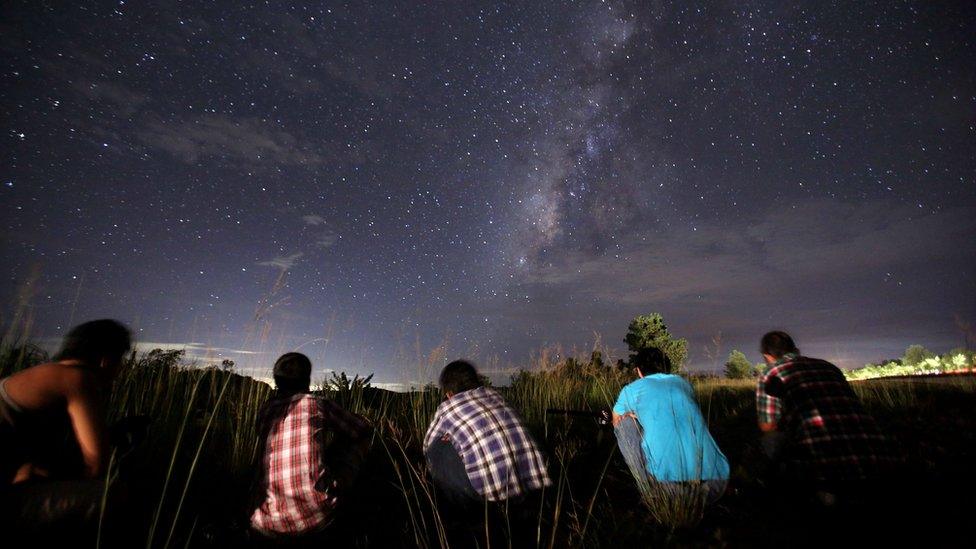Leonid Meteor Shower: How to spot them this weekend
- Published

Finding open areas away from light pollution is the best way to see meteors
The Leonid meteor shower - or Leonids - will be streaking across the night sky this weekend
It is believed to be one of the biggest meteor showers of the year, lasting more than three weeks.
They began on 6 November and will continue to light up the sky until the end of November.
The best times to see them in 2024 are on the night of 17 November and the morning of 18 November.
Read on to find out more about the shooting stars and how you can see them.
What are they?
A picture of a Leonid meteor during The Storm of 1966
The Leonids are lots of fast and bright shooting stars racing through the sky.
The shower happens each year when the Earth passes through a trail left behind by Comet Tempel-Tuttle.
Tempel-Tuttle is what NASA calls a small comet, but it is still 2.24 miles across. It takes 33 years to go around the Sun.
Its trail of dust and ice particles are what create the meteor shower in the night sky.
Every 33 years, the Leonids shower becomes a storm. This is when there are thousands of meteors an hour, instead of the 10 to 15 we are likely to see throughout much of November.
The last Leonid storm was in 2002, so the next one should be in 2035.
The Leonid meteors are named after the Leo constellation. Leo is a Latin word meaning Lion. The constellation is named Leo because it looks like a crouching lion.
The lion's mane and shoulder are often referred to as "The Sickle".
When is it?
The shower takes place over several days, but it is at its peak on the 17 and 18 November this year
The meteor showers are peaking this year on the 17 and 18 November between midnight (12am) and dawn (7am).
You might be able to see them several days before and after these dates too.
They can also be spotted between 6 November and 30 November, although they will be more difficult to see then.
How can I see them?
The Leonid showers are fast meteors which take place in November each year
The best way to view a meteor shower is to find somewhere where the night sky will be dark and clear.
Ideally, you will want to find a place away from lots of lights and light pollution.
Meteors are easier to spot in the early morning, or just before dawn. This means you might need to get up early, wrap up warm and wait a while to view the shower.
If you can find an open area, away from tall trees or buildings, that will help.
Don't forget to give your eyes time to adjust to the dark too. Best of luck and let us know in the comments how you got on.
- Published17 November 2022
- Published13 February 2023
- Published16 February 2023
